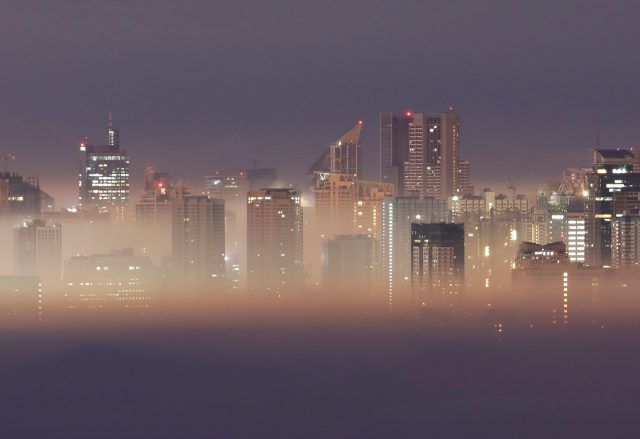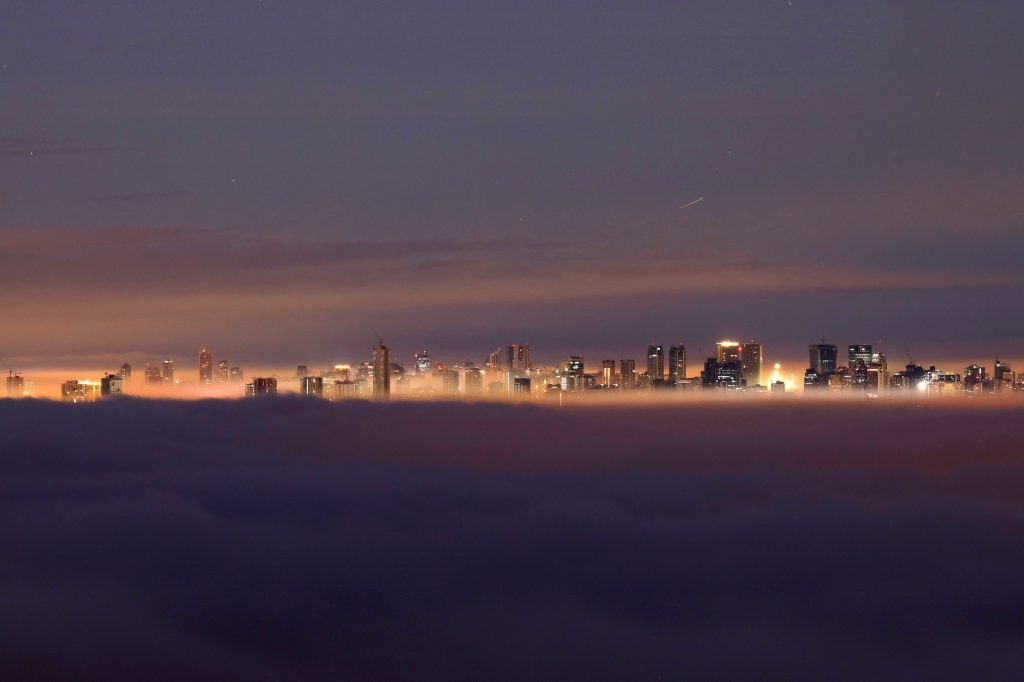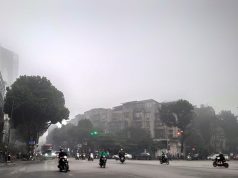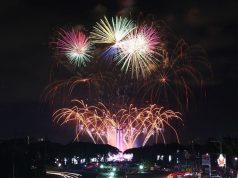
The quality of air in Metro Manila the first hours of January 1, 2019 became ‘very poor’ due to the many fireworks displays celebrating the New Year and the cold, rainy weather brought by Tropical Depression Usman.
According to the air quality monitoring website Airtoday.ph run by the Rotary Club of Makati, their two monitoring stations at Ayala Avenue Makati City and Lung Center of the Philippines in Quezon City recorded very high levels of particulate matter (PM) throughout the night.
“Ayala Avenue Makati Station recorded the highest PM concentration around 1:00 am January 1, 2019 with 114 micrograms per cubic meter of air (μg/m3) for PM10 and 113 μg/m3 for PM2.5,” airtoday.ph said in a post on their website
PM10 refers to particles in the air smaller than 10 microns in diameter while PM2.5 is for particles smaller than 2.5 microns. For reference, human red blood cells are 6-8 microns in diameter.
The World Health Organization considers 25 μg/m3 as the safe standard for air particulate matter.
“Particles with a diameter of 10 microns or less can penetrate and lodge deep inside the lungs. The even more health-damaging particles are those with a diameter of 2.5 microns or less (which) can penetrate the lung barrier and enter the blood system,” WHO said in a May 2018 post on air quality and health.
“Chronic exposure to particles contributes to the risk of developing cardiovascular and respiratory diseases, as well as of lung cancer,” it added.
Airtoday.ph’s second monitoring station at the Lung Center of the Philippines recorded a PM concentration of 99 μg/m3 for PM10 and 98 μg/m3 for PM2.5.
While the air pollution recorded was high, airtoday.ph noted that it was lower compared to the previous year’s readings 149 ug/m3 for PM10 and 131 ug/m3 for PM2.5 for Ayala Avenue station.
Health risks of air pollution
Tropical Depression Usman’s rains had an effect on the air pollution from fireworks, according to Dr. Mylene G. Cayetano, faculty at the Institute of Environmental Science and Meteorology, UP Diliman and technical expert of airtoday.ph.
“The rain clouds brought about by Tropical Depression Usman washes away the particles emitted by fireworks and firecrackers,” she said.
“These same rain clouds (combined with colder temperature) prevents polluted air from dissipating farther upward, hence, trapping the particulates from the fireworks on the ground for more extended periods to be ingested into the respiratory system of people in Metro Manila,” Cayetano added.

The World Health Organization considers air pollution to be a “major environmental risk to health”
“Outdoor air pollution in both cities and rural areas was estimated to cause 4.2 million premature deaths worldwide per year in 2016; this mortality is due to exposure to small particulate matter of 2.5 microns or less in diameter (PM2.5), which cause cardiovascular and respiratory disease, and cancers,” it said.
“A 2013 assessment by WHO’s International Agency for Research on Cancer (IARC) concluded that outdoor air pollution is carcinogenic to humans, with the particulate matter component of air pollution most closely associated with increased cancer incidence, especially lung cancer,” WHO added.









